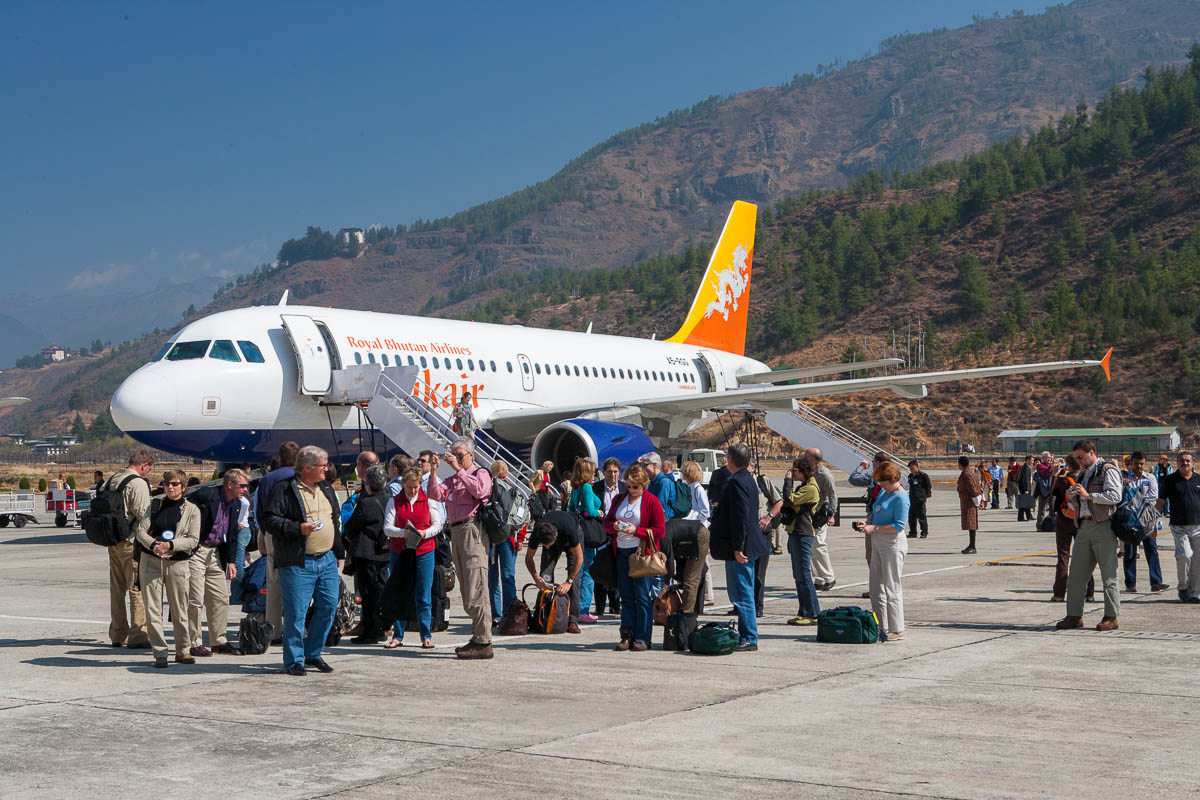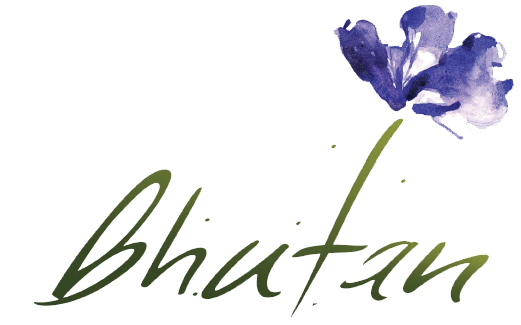
While attending the 2017 Travel and Adventure show in Los Angeles, one woman asked the question “I heard that I need to win the lottery to visit Bhutan, is that true?”. At first, I thought it was some sort of suggestion that the cost was simply too high and that only people who were extremely wealthy could afford to go there. Instead, it turned out that she had understood from somebody that if you want to go to Bhutan, you had to put your name onto a list and maybe your name would be chosen.
It wasn’t only that single incident where I heard about these difficulties. Even a colleague of mine said once to me “I heard that it is quite difficult to get a visa to Bhutan”.
Although I have not heard the following directly, I know that many people also believe that there is a limit or quota on the number of tourists visiting Bhutan in a particular year.
Background in Bhutan Tourism

The mystery and myths associated with acquiring a visa to Bhutan likely originates from the rather closed nature of Bhutan and the way that tourism was introduced into Bhutan and the manner in which tourism is closely controlled even today.
Unlike India, Bhutan was never colonized by any outside nation. Some suggest that Bhutan wasn’t colonized to a limited number of natural resources available such as farming land beyond the lower laying areas. The British actually did annex the southern regions of Bhutan known as the Dooars. Bhutan signed a treaty giving Britain control over its foreign relations. When India became independent in 1947, they inherited the control of Bhutan. Foreigners were simply not granted entry into Bhutan without a permit from the Indian Ministry of External Affairs until the Bhutan government established tourism in 1974.
Until the early 1970’s, there were no tourism support facilities (such as hotels) and as a result tourism into Bhutan would simply not have been possible.
Tourism in Bhutan was introduced as a means of acquiring foreign currency to help with international trade. In the neighboring country of Nepal, Kathmandu had become part of the Hippie Trail and was full of people looking to buy legal hashish and cannabis (from the government shops). Seeing the negative Based on the negative impacts of a completely wide-open tourism policy, Bhutan attempted to control the growth of the tourism sector and bring in a limited number of high-quality tourists.
What makes a tourist “high quality”? Tourist who bring a lot of US dollars, stay for a short duration and leave make very high-quality tourists. If you compare this to the people visiting Kathmandu during the 1960s and 1970s, the tourists would arrive with relatively no funds and live in very run-down accommodations (or sleep on the street) for extended periods of time. Since a number of visitors were looking for drugs, then they likely carried in other problems such as theft.
The initial tourism law in Bhutan proposed that tourists must travel in groups with sizes between 6 and 10 people. It also required that tourists must carry hard currency (assumed to mean US dollars) to be exchanged at the Bank of Bhutan and tourists were not permitted to stay more than 10 days.
The tourism restrictions these days have changed but it is easy to deduce how the rules of tourism could become misunderstood to suggest that the number of visas is limited or that you must go through some very difficult process to acquire a visa.
How Tourism Actually Works Today

Although the government does strive for “high value, low impact” tourism, they do not enforce this through limited numbers of annual visa, or some sort of lottery system. Instead they make it appear to be expensive which tends to naturally keep the number of tourists down which achieves their low impact objective. I used the phrase “appear to be expensive” because it actually is not expensive compared to many other locations but requiring visitors to purchase an all-inclusive package means that people who want to go cheap simply do not have the option. As a result, there is a large group of travelers who simply do not actually visit Bhutan because it is not within their travel budget.
The objective of high value tourism is something that the neighboring countries even today has not implemented. We personally visit Nepal and Thailand on a very regular basis. From our observations we know that it is possible to spend a lot of time in these countries and spend only a small amount of money. It isn’t that people visiting on tight budgets are going around these countries causing trouble (we know that there are of course exceptions) but Bhutan sees a person injecting $1000 into the local economy over a 30 day visit as less desirable than a person injecting the same $1000 over a period of 4 or 5 days. The shorter duration traveler allows for another tourist to come in and do the same with a smaller number of restaurants and hotels providing a lower impact on the resources.
In general, countries benefit from tourism from the collection of taxes charged to the tourists at their hotels, the restaurants and various services that the tourists use. Rather than relying on the businesses to collect and remit the taxes, the Bhutan government has decided to directly tax the tourist at the rate of $65 per day per person. This direct tax is known as the government royalty. The tax is directly collected from the tour payment that is sent to your tour operator.
How to Obtain the Visa
I am of course talking about tourist visas in this article, but I will talk about the other types of visas in a later article.
No foreign national is allowed to just appear in Bhutan without some sort of pre arrangement. Nationals from India, Maldives and Bangladesh, known as regional tourists, are exempt from paying the royalty and are not subjected to the minimum daily tariff but there have been changes over the past couple of years requiring permits to be arranged. This subject is sufficiently large enough to warrant its own article at a later time.
The only requirement to obtaining a visa is that you have sent the minimum tour payment to a local tour operator that has been correctly registered with the tourism department. When you send money to the agent in Bhutan, the money is not actually received by the operator but instead placed into a special tourism account. When the visa is issued, the amount in the account is verified and the funds are locked until after the trip has been completed. It is a way to ensure that tourist’s money is not misused, and that the payment is safe against the tour operator from going out of business.
Unlike most other countries where you need to send your passport to an embassy abroad, you only need to send an electronic scan of the first page of your passport to the tour operator who applies for the visa on your behalf. When the visa is issued, you will be sent a PDF document that you need to print and bring with you to show the airline.
Myth Busting
There is absolutely no limit on the issuing of tourist visas. The Tourism Control Board of Bhutan instead wants to increase the number of international tourists, especially in the lean/low season, because they benefit from the direct collection of the government royalties.
There is no visa lottery and there is nothing random about the approval or rejection of the visa, in fact the chances of a regular tourist visa being rejected is pretty close to zero. The primary (and generally only) requirement is that a tourist has sent the minimum payment to the tour operator and that the tourist is not on some watch list.
A number of countries in the world (countries in North America and Europe for example) have very strict visa requirements and end up with a lot of visa application rejections. Occasionally we are asked if there is a chance that a tourist visa will be rejected. We do sometimes get requests to issue the visa first and then the money will be sent but of course this is simply not possible because the money must be sent in order to apply for the visa.
The actual application for the visa is done by the local tour operator, no forms are required to be filled, you just send the tour operator the first page of your passport electronically and you will get back a visa. The actual cost of the visa is included as part of the tour package.
Conclusion

Getting a visa to Bhutan is probably the easiest country in the world to apply for a visa. Just send a scanned page and you get a PDF version of the visa. The PDF visa document isn’t even used by the immigration officers because your passport information is stored in the computers. However, make sure to bring the visa approval document just in case and the airline is not going to give you boarding passes without the approval letter.
If you see some references online to bringing some additional payment or photographs with you, that is old information. In the past couple of years, Bhutan Immigration has even even done away with the landing and departure cards so no need to fill out anything.

